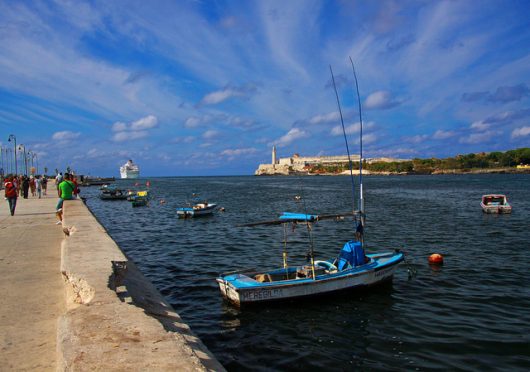Facts and Figures About Cuba

A Caribbean island with Spanish as its official language, Cuba is a nation rich in tradition and culture. The United States has had a strained relationship with the country since the travel ban of 1962. However, learning about Cuba continues to provide incredible insight about how to strengthen diplomatic ties between the two countries. Here are 10 facts and figures about Cuba.
- Only 6.3 percent of the population lived below the poverty line in 1984, which is impressive for a nation with such limited resources.
- In 1986, nearly all school-aged children had enrolled in some form of schooling. By 1990, the country reached a 98 percent literacy rate.
- Fewer than five percent of Cubans can access the Internet. However, companies like Netflix and Google have made plans to incorporate their systems into the Cuban economy. Netflix made its services available to islanders in February of 2015.
- Although the official religion of Cuba is Roman-Catholicism, with 60 to 70 percent of individuals identifying as Roman Catholic, the island is home to great religious diversity. Approximately 5 percent of the population is Protestant, with most identifying as Baptists and Pentecostals. There are also 94,000 Jehovah’s Witnesses, 30,000 Seventh-Day Adventists and Methodists, 22,000 Anglicans, 15,000 Presbyterians, 300 Quakers, 50 Mormons and 1,500 Jews.
- The current population is around 11.2 million, making Cuba 107th on the list of global population density.
- Since 2011, 93.8 percent of Cubans have had access to improved drinking water sources, and 92.1 percent have had access to improved sanitation facilities. People living in urban areas largely have better resources than those in rural areas.
- Between 1990 and 2012, the under-5 mortality rate in Cuba decreased significantly. This rate was 13 percent in 1990 and is now about six percent.
- Cuba’s constitution lists healthcare as a fundamental human right. As a result, the government has implemented things like its vaccination program. The vaccination program began in 1962, and the nation maintains some of the lowest global rates of vaccine-preventable infectious disease.
- Cuba emphasizes women’s rights. It is ranked fourth in the world in terms of women in politics and approximately 43 percent of their parliament members identify as female. Women receive 18 weeks of maternity leave with full pay. They also have additional leave, with 60 percent pay for the first year of their children’s lives.
- Cuban cities are dedicated to sustainability efforts. As of 2010, for example, organic urban farms provided 100 percent of produce in Havana.
While these facts and figures about Cuba cannot fully encapsulate the country, they certainly paint a vivid picture of the exceptional nation that Cuba continues to be. A hub of diversity and human rights, Cuba’s recent successes support the claim that these things will continue improving in the future.
– Emily Chazen
Photo: Flickr
